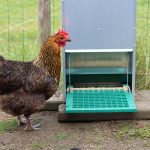How To Hold A Chicken?
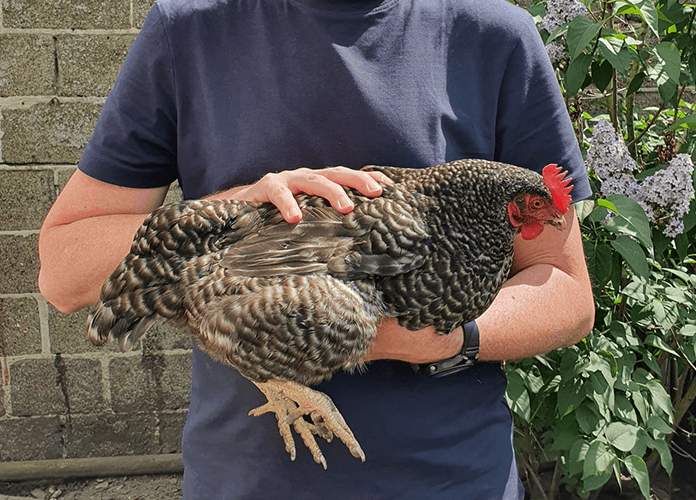
Getting your chickens used to be picked up and held brings multiple advantages. It’ll make it easier to examine them in case of problems or illnesses or makes them more sociable to humans. But how to hold a chicken? And how to hold baby chicks or roosters?
We’ll tell you all about it!
Why hold or catch a chicken?
- Check for health issues
- Bathing
- Socializing
Check for health issues
There are numerous diseases endangering your flock, like Marek’s disease, fowl cholera, fowlpox, or coccidiosis. One is more common than the other, but all diseases can wipe out an entire flock. Infestations like red mites, lice, or flystrike are less dramatic but still severe.
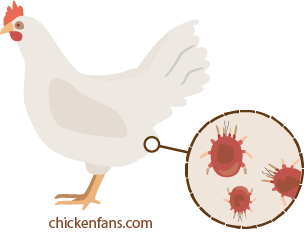
By regularly checking and inspecting your hens, you’ll catch eventual illnesses or infections in an early stage and provide them with the help they need.
Bathing
Bathing your chickens is seldom necessary as they do not like water baths and clean themselves by preening and taking dust baths. In some cases, a chicken needs extra care—especially when vent feathers are soiled with poop or in the case of flystrike.
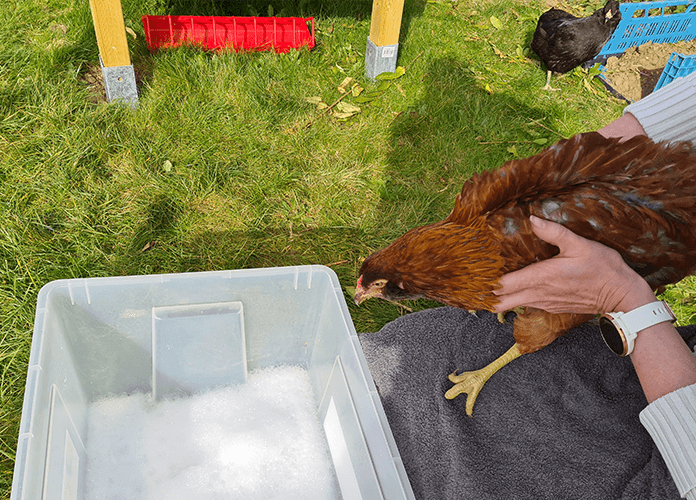
As taking a water bath for chickens can be pretty stressful, you need to gently but firmly hold your chicken in the right way so they don’t get hurt.
Socializing
Even when your chickens are not sick, familiarizing them with human contact is always a good idea and will make them more sociable. Some chicken breeds are more pet-friendly than others. Silkies, for example, are very friendly and cuddly chickens and have a pleasant nature. You can even keep them as pets inside the house once they’re potty trained or used to wearing a chicken diaper.

So, it’s easier to train sociable breeds to be picked up and held than others. Remember that chicks and roosters have other characters and needs and need to be handled differently than adult hens.
How to hold a chicken?
The best way to learn is to try it yourself! We’ll give you all the tips and ‘know how’ to properly catch, pick up and hold your backyard chicken.
How to catch a chicken?
Catching adult hens isn’t always difficult, as most will crouch or squat when you approach them. Especially if they know you. A crouching hen flattens her back and spreads her wings, telling you she’s ready to mate. It’s a sign of submission, making it relatively easy to scoop her up.
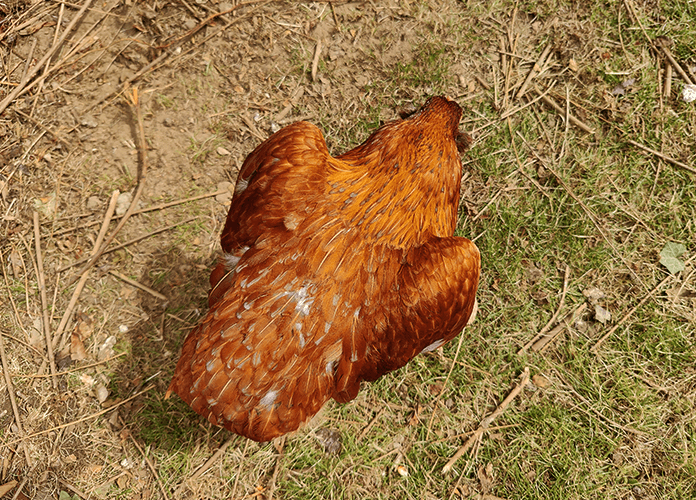
If your chicken is running away from you, try to lure her with some tasty snacks like mealworms or, if that doesn’t help, catch her using a net or a large cardboard box. Don’t scare, chase, or hurt them. A scared chicken is much harder to catch than a relaxed one.
How to pick up a chicken?
The easiest and fastest way to pick a chicken up is by bending down behind her and gently scooping her up. Always scoop your chicken up from under her body. Use your hands to cover the wings as she might hurt herself by trying to flap out of your grip. It can take a few moments for her to relax, take your time and let her adjust to the situation. Don’t drop her or lose your grip, which needs to be firm but gentle.
How to hold a chicken?
Picking up and holding a chicken can be pretty stressful for your hen. It would be best if you were as quick (but thorough) as possible to make the experience last as short as possible. Gently slide your hand between your chickens’ legs, wrap your thumb on one side of the leg, and pinky through the middle finger on the other end. This way, their body rests on your forearm, and you can hold the thighs together with your fingers. Hold the other hand on their wings so they can’t start flapping.
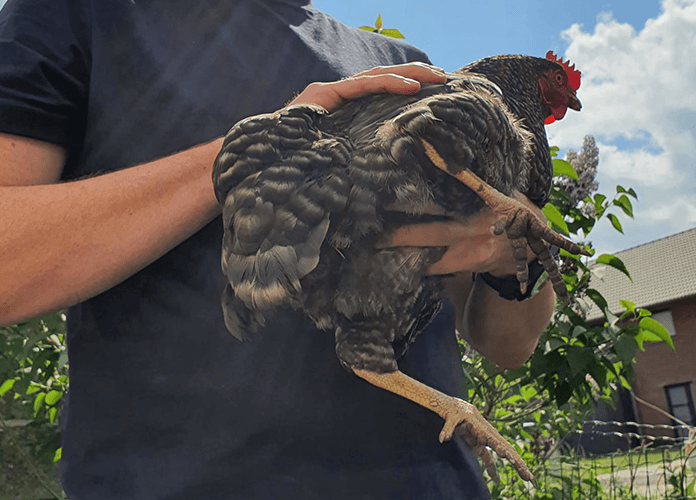
After the check-up is over, gently place her back on her feet so she can join the other flock members.
How to hold a chick?
Baby chicks are highly vulnerable and need to be handled with care. Never let small children hold or pick up your chicks unattended, as they might be rough or squeeze too much. But because of their vulnerability, chicks need to be checked and examined regularly. You have to check their legs for spraddle legs or checked for pasty butt, so they need to be picked up frequently.
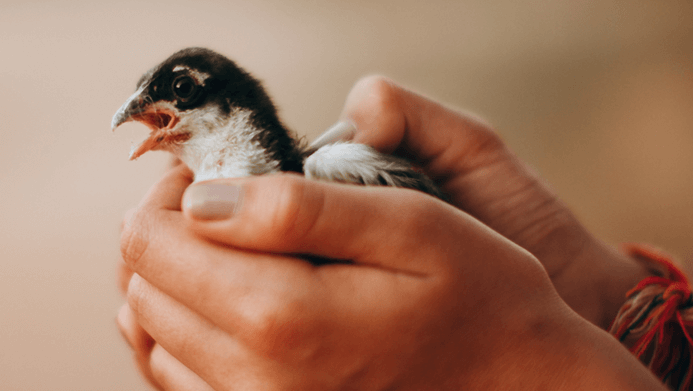
Scoop up a chick with one hand under the feet and the other holding their body and wings. Do not squeeze them or hold them too firm. If you want, you can let your children pet the chicks, but when noticing this brings too much stress to the bird, it’s better to leave her and try another time again.
How to hold a rooster?
As roosters can suffer the same health problems as hens, it can be necessary to catch and examine them now and then. Depending on your rooster’s age, breed, or character, this can be quite challenging. If you have a feisty rooster on your hand, consult our ‘How to tame an aggressive rooster-guide‘ before you start.
When trying to catch or hold a rooster, protecting yourself is critical. Put on hand protection, long trousers, a coat or clothing with long sleeves, and a cap to protect your hair and head. A rooster won’t submit to you, at least not at first. So, when you’re not up to the time-consuming task of training your rooster, look for other solutions.
The easiest way is to catch them when it’s dark, and the rooster sleeps. As chickens can’t see in the dark, they’re less likely to put on a fight or attack during nighttime. If you have to catch the rooster during the daytime, use a net or a large cardboard box, or lure him to a separate area where he can be examined without the presence of the other hens.
Once you’ve captured your rooster, hold him firmly and put your dominant hand on the rooster’s wings so he can’t escape. Please make sure the task is done quite rapidly, so he can be released in no time.
Summary
When your chickens aren’t used to being picked up or held, only do so when necessary. For example, when you have to check for lice or other parasites or bathe them. If your hens are ok with being picked up, keep doing this frequently to socialize them. Be aware that chicks and roosters need different approaches and should be handled accordingly.

